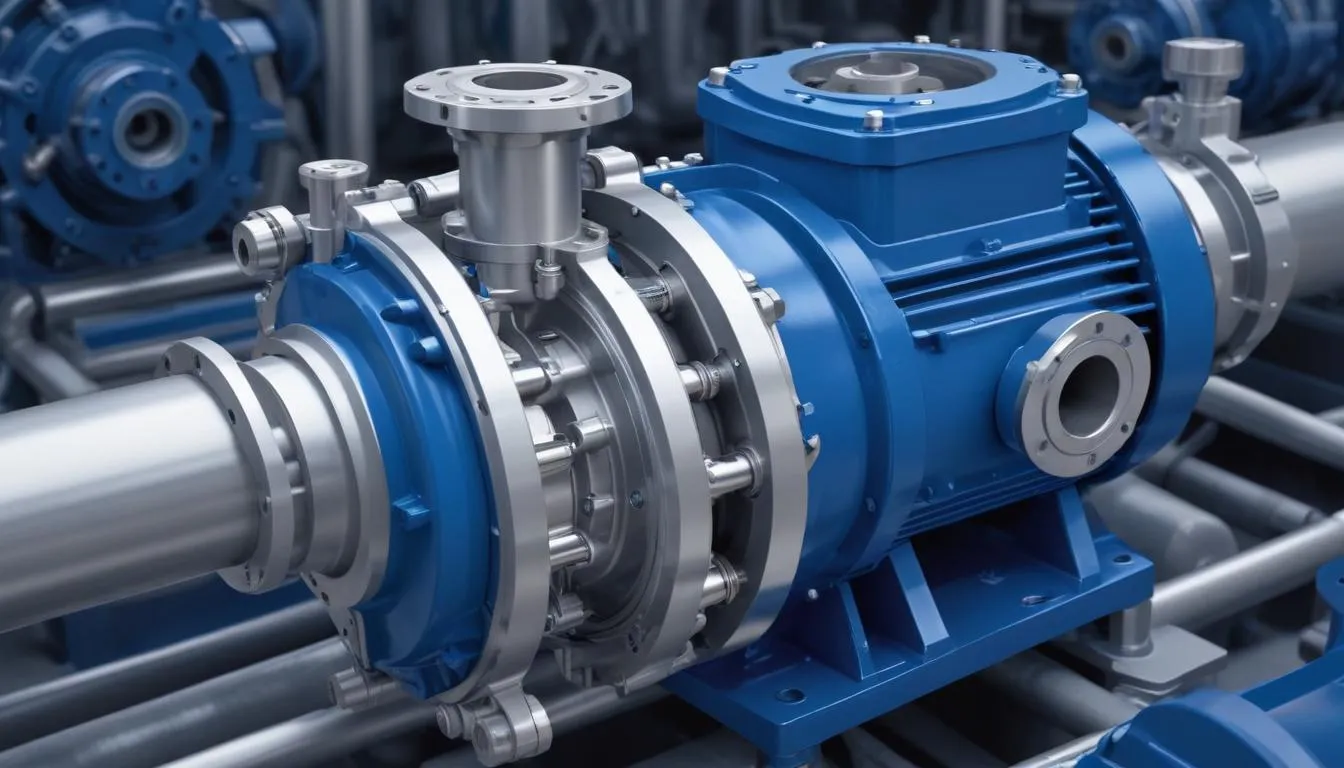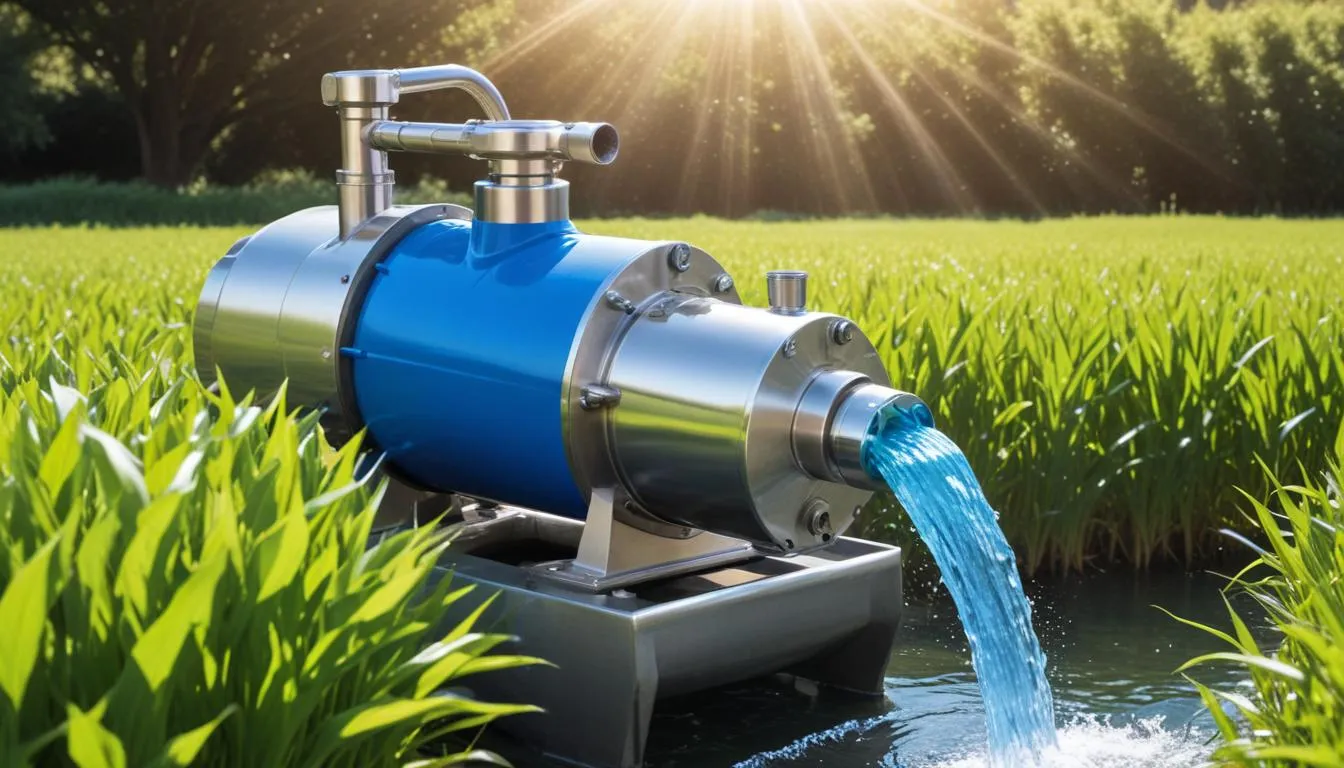 Self-priming pumps are a specialized type of centrifugal pump designed to efficiently handle fluids, particularly in situations where a source of fluid is located below the pump. These pumps are unique because they can automatically remove air from the suction line and create a vacuum that allows for the drawing of liquid into the pump casing without the need for manual priming.
Self-priming pumps are a specialized type of centrifugal pump designed to efficiently handle fluids, particularly in situations where a source of fluid is located below the pump. These pumps are unique because they can automatically remove air from the suction line and create a vacuum that allows for the drawing of liquid into the pump casing without the need for manual priming.
One of the critical features of self-priming pumps is their inherent ability to maintain continuous operation even in intermittent fluid supply scenarios. This capability makes them particularly advantageous in various industrial and agricultural applications. The operation of these pumps hinges on a combination of centrifugal force and fluid mechanics, allowing them to achieve a high level of efficiency while minimizing the risk of cavitation, which can often compromise the functionality of traditional pumps.
The primary benefits of using self-priming pumps include:
- Reduced manual intervention: No need for priming before operation, saving labor time and costs.
- Versatility: Effective for pumping water, chemicals, and other liquids, making them suitable for diverse industries.
- Reliability: Designed to operate under challenging conditions, ensuring consistent performance.
- Energy efficiency: Many modern models are engineered to maximize energy use, contributing to lower operational costs.
Self-priming pumps are essential tools that facilitate smooth operations in systems where liquids need to be transferred from low-lying sources, making them a favorite among professionals in fields such as construction, agriculture, and wastewater management. Their design and operation reflect significant advancements in pumping technology that enhance both efficiency and reliability.
How self-priming pumps work
The operation of self-priming pumps is based on the principles of fluid dynamics and mechanical engineering. These pumps are equipped with a unique casing design that allows them to create a vacuum, which is essential for pulling the liquid into the pump. The initial filling of the pump casing with liquid is typically aided by a small amount of fluid that remains in the pump after it has stopped. This residual liquid is pivotal in enabling the pump to establish the necessary suction.
Once the pump is activated, the impeller begins to rotate, generating centrifugal force. This force pushes the liquid outwards, while simultaneously creating a low-pressure zone within the casing. The presence of this low pressure causes any air trapped in the suction line to be displaced, allowing the liquid to fill the cavity. As liquid enters the pump, it replaces the air, which is expelled back into the atmosphere.
The design features of self-priming pumps contribute significantly to their functionality:
| Feature | Description |
|---|---|
| Check Valve | Prevents backflow of liquid, ensuring that the pump remains primed for the next operation. |
| Impeller Design | Optimized to maximize flow rates and maintain high efficiency under varying conditions, enhancing performance. |
| Self-Priming Capability | Allows the pump to eliminate air from the suction line autonomously, reducing downtime and maintenance needs. |
In addition to the pump’s mechanics, the surrounding installation plays a crucial role in its effective operation. The alignment and configuration of the suction line must be properly managed to prevent air leaks, which could hinder performance. Furthermore, the depth at which the pump is installed relative to the liquid source is vital; optimal positioning facilitates better suction and reduces the chances of air entrapment.
The benefits of using self-priming pumps extend beyond just convenience. Their efficiency in handling various types of fluids, including those with solid particulates or varying viscosities, makes them invaluable in sectors like wastewater treatment and chemical processing. Industries increasingly turn to self-priming pumps for reliable operation, thus enhancing overall productivity and reducing operational costs associated with fluid transfer.
Benefits of using self-priming pumps
The utilization of self-priming pumps offers numerous advantages that can significantly enhance operational efficiency across various sectors. One of the most notable benefits is the minimization of manual intervention. By eliminating the need for manual priming before use, these pumps streamline workflows, conserving valuable labor time and reducing costs associated with maintenance.
Another compelling aspect is versatility. Self-priming pumps are designed to handle a wide range of liquids, encompassing not only water but also chemicals and other viscous fluids. This adaptability makes them suitable for multiple industries, including agriculture, construction, and manufacturing. The capability to pump liquids laden with solids or those with varying viscosities further expands their applicability, allowing users to tackle diverse challenges effectively.
Moreover, reliability is a critical factor in the operation of self-priming pumps. Constructed to perform under challenging conditions, these pumps consistently deliver high-quality performance, minimizing downtime. Their design typically includes features such as a robust casing and durable materials that withstand harsh environments, ensuring long-term reliability and functionality.
In addition to operational reliability, energy efficiency is another significant benefit. Many modern self-priming pumps are engineered with energy-saving technologies that optimize power usage during operation. This efficiency not only reduces energy costs but also aligns with sustainability goals, making them an environmentally friendly option for fluid transfer needs.
The following table summarizes the key benefits of using self-priming pumps:
| Benefit | Description |
|---|---|
| Reduced Manual Intervention | No pre-operation priming required, saving time and labor costs. |
| Versatility | Can pump a variety of liquids, suitable for diverse applications across industries. |
| Reliability | Continuously operates under tough conditions, ensuring steady performance. |
| Energy Efficiency | Modern designs focus on maximizing power utilization, lowering operational expenses. |
In summary, the operation of self-priming pumps exemplifies the advancements in pump technology, where key benefits combine to enhance productivity and efficiency in fluid management. As industries evolve and demand more reliable solutions, self-priming pumps stand out as indispensable tools in various operational scenarios.
Common applications for self-priming pumps
 Self-priming pumps find extensive application across a wide array of industries due to their versatility and efficiency in fluid transfer. Their ability to handle liquids from lower elevations without requiring manual priming makes them indispensable in various operational scenarios.
Self-priming pumps find extensive application across a wide array of industries due to their versatility and efficiency in fluid transfer. Their ability to handle liquids from lower elevations without requiring manual priming makes them indispensable in various operational scenarios.
In the agricultural sector, self-priming pumps are frequently utilized for irrigation systems. They effectively draw water from wells or surface sources, ensuring that crops receive consistent and reliable hydration. These pumps can also manage liquid fertilizers and other agricultural chemicals, making them critical for optimizing resource use in farming practices.
The construction industry leverages self-priming pumps for dewatering applications, particularly at job sites where groundwater can hinder progress. These pumps efficiently remove excess water, creating a safer and more manageable work environment. They are also used for transferring cement slurries and other viscous materials, showcasing their adaptability to different liquids.
Another significant area of application is in wastewater management. Municipal and industrial wastewater facilities employ self-priming pumps for transferring raw sewage, sludge, and other waste products. Their capability to handle fluid mixtures with solid particulates is crucial for maintaining the efficiency of treatment processes, reaffirming the operational benefits these pumps offer in ensuring public health and environmental safety.
Self-priming pumps are also employed in the chemical processing industry, where they transport a variety of corrosive or hazardous liquids. Their robust design and ability to maintain performance under demanding conditions make them suitable for handling hazardous materials, thereby ensuring compliance with safety regulations while offering reliability.
In addition to these applications, self-priming pumps are frequently seen in firefighting equipment. Their capability to quickly draw water from lakes, ponds, or hydrants makes them essential for emergency response teams, facilitating rapid firefighting operations in critical situations.
Here’s a summary of common applications for self-priming pumps:
| Application Area | Description |
|---|---|
| Agriculture | Used for irrigation and transferring fertilizers and chemicals to optimize resource use. |
| Construction | Employs pumps for dewatering job sites and transferring heavy materials like cement. |
| Wastewater Management | Handles raw sewage and sludge to maintain efficient treatment processes. |
| Chemical Processing | Transports corrosive or hazardous liquids within safety regulations. |
| Firefighting | Quickly draws water from various sources for immediate response during emergencies. |
Due to their functionality and reduced maintenance requirements, self-priming pumps serve as reliable solutions tailored to multiple operational needs across diverse sectors.
Maintenance tips for self-priming pumps
To ensure the optimal performance and longevity of self-priming pumps, regular maintenance is essential. This not only enhances the efficiency of the pumps but also significantly minimizes operational downtime. Here are some crucial maintenance tips for users to consider:
- Regular Inspections: Conduct routine visual inspections to check for any signs of leaks, wear, or damage to the pump casing and connections. Look for loose fittings or cracks that might affect performance.
- Check and Clean the Suction Strainer: The suction strainer filters out debris and prevents it from entering the pump. Regularly clean and inspect the strainer to ensure unrestricted fluid flow.
- Monitor Seal Integrity: The seals in self-priming pumps are critical for maintaining pressure and preventing leaks. Regularly check seal conditions and replace any worn or damaged seals promptly.
- Lubrication: Follow the manufacturer’s guidelines regarding lubrication. Proper lubrication of moving parts helps reduce friction, enhances efficiency, and extends the life of bearings and impellers.
- Check Fluid Levels: Ensure that the pump is adequately filled with fluid before operation. Insufficient liquid can lead to cavitation, which can damage the pump components.
- Monitor Vibration Levels: Excessive vibration can indicate misalignment or imbalance within the pump system. Use vibration analysis tools to detect irregularities and address them quickly.
- Store Properly: If the pump is not in use for an extended period, ensure it is stored in a dry, clean environment to prevent corrosion and damage from environmental factors.
In addition to these maintenance tasks, it is essential to follow the manufacturer’s recommended schedule for more extensive inspections and overhauls. Keeping a maintenance log can help track service intervals and highlight any recurring issues that may need addressing.
By prioritizing maintenance, operators can ensure that self-priming pumps continue to deliver reliable performance, maximizing both their operational benefits and lifespan. Proper upkeep leads not only to a smoother operation but also significantly reduces the risk of unexpected failures and costly repairs.